|
Terrains on Tenerife
Tenerife is an island not only of terrains for flying, whose detailed description including indications on maps can be found in the Flying landscapes section, but also an island of excellent terrains for mountain hiking, or biking. High up in the mountains, we often ran into small groups of wanderers with packs on their backs, climbing the rocky slopes up somewhere, and among the huge wave breaking concrete slabs on the edge of the beach we even discovered a carefully hidden little tent. Tenting and camping and even building fires is strictly forbidden on Tenerife. Human inventiveness knows no bounds however and often we met tourists, accommodated in their caravans, parked by the beach, including a Czech paraglider from the city of Beroun with his entire family.
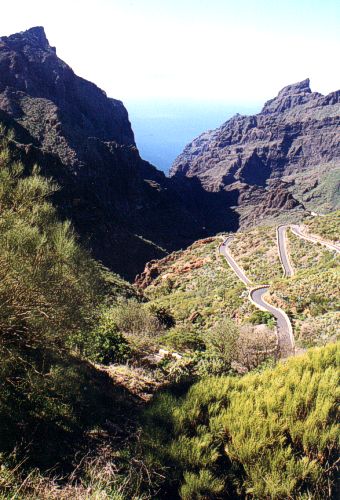
The Thermic Southwest - Taucho, Ifonche
The southwestern thermic zone near the port of Los Cristianos is perfectly sheltered from the predominating eastern to northeastern streaming through the crest of the central part of the island. The several kilometer long , rocky crest with a height of about 1000 meters forms a huge horshoe here by the shore, into which, in the afternoon hours, the sun beats down strongly, and is intensified by the reflection off of the ocean surface. So stable chimneys are formed above the heated cliffs and it is no problem to stay in the air until sunset.
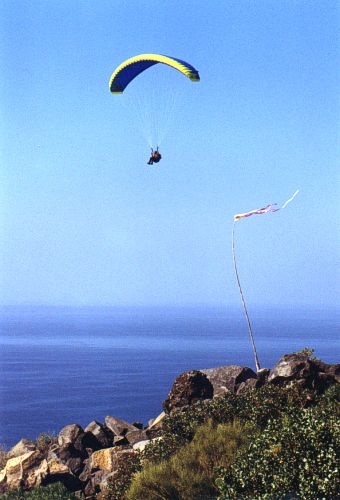
The most frequented of runways is definitely Taucho, even though we preferred the higher and more mountain-wedged Ifonche. The landing strip is the same for both and from Ifonche it is actually out of the way a bit, putting it more accurately, 5km. Maybe for this reason Ifonche is not as crowded. But in the sunny afternoon making the 4.5 km flight from Ilfoche to Taucho is no problem at all, not even several times in a day.
And the Water Isn't Running Again
Water, not only on Tenerife, but on all of the Canary Islands, like electricity is a rare and expensive commodity. It is for this reason that most houses are specially equipped for collecting rain water and designed with light in mind. Flat roofs with raised edges, reminiscent of a shallow pool, catch rare rainwater along their entire surfaces and channel it to huge underground storage tanks. This type of reservoir is then the source of water for the whole house.
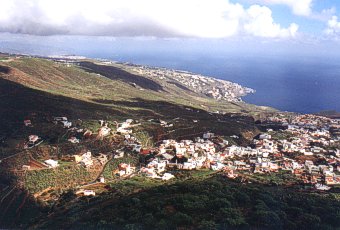
Lighting of houses, in addition to large windows, is resolved with special openings in the ceilings which allow bright sunlight to come in, not directly, but reflected by the surrounding white edges and walls of the rooms. A certain amount of electricity on the island is manufactured by wind powered turbines that are sown in groups, mainly along the southeast, windy shore. In one are of the coast counted 34 huge rotating propellers. The majority of the electricity manufactured on the island is made, however, by immense diesel generators, that remind one of small factories. Electricity on the islands is therefore very expensive, resulting in economizing its use. In the hotel where we stayed for example, you couldn't turn on the lights or use the sockets without inserting a special coded card into the central control panel behind the door of the apartment. The same card is used however to unlock the door to the apartment, so upon leaving you must be sure to turn everything off as you need to take the card with you. Then again, the local residents don't go to extremes in saving electrical energy, and certainly don't forget light up their colorful Christmas lights on their trees and houses.
|
Although, honestly said, the sight of a palm tree decorated with Christmas lights is for a central European such an unusual sight that he can't help but stop and stare for a while in disbelief.
Parque Nacional del Teide
Not far from the astronomical observatory Iza˛a begins the expansive territory of a national park with approximately 30km long stretch of road. This territory is not suitable for flying, but is certainly worth seeing, especially in the case of not being able to take off from the high-elevation runways around the observatory, due to strong winds.
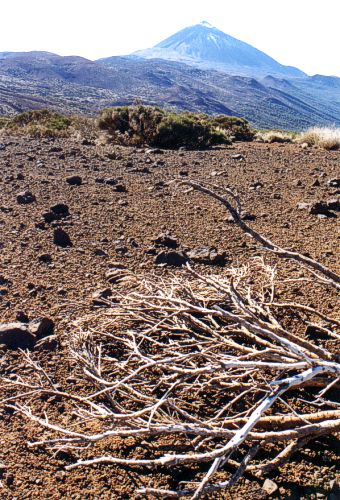
The upper plain of the national park lies at an altitude of over 2000 meters above the surface of the Altlantic and the surrounding barrier of cliffs and volcanoes protects it from strong winds. Even though at these elevations, low temperatures predominate in the open space, in the enclosed cauldron of the upper plain, into which the sun shines with unbeliveable intensity, the temperature is noticeably higher.
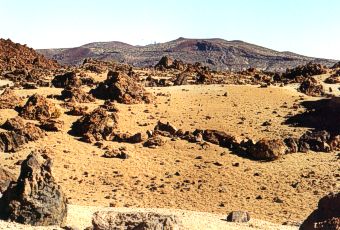
The landscape of torn-apart volcanic cliffs and sand dunes affects a person in an unusual way, a strange quiet dominates it and the local scenery is reminiscent of scenes from science fiction films that take place on other planets.
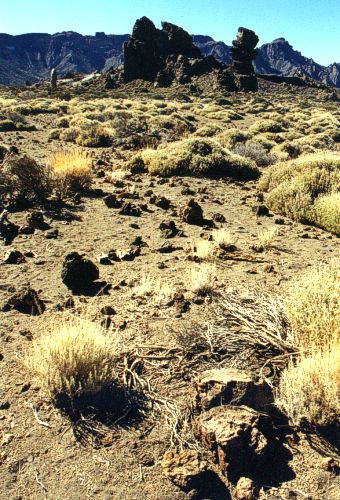
Canary Girls
Spanish girls on Tenerife are very lively and tempermental, and behave very openly and without any shyness will engage a foreigner in conversation. We noticed the some of them even hang around the area of the hotel with this intention. Undoubtably they long for tales of exotic countries in the north, where frost sometimes reaches temperatures of -20 degrees Celsius, snow storms create snow drifts so big that not even a truck can drive through, shit that sink in up to our ankles and public transport where the flu and other ugly sicknesses are spread happily ...
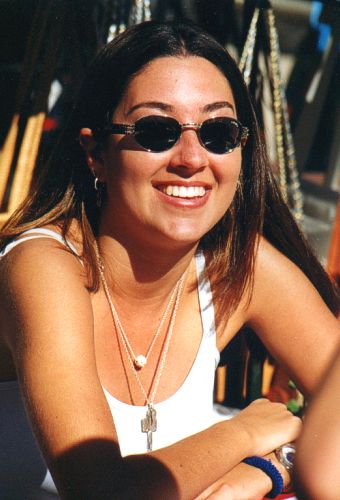
|






